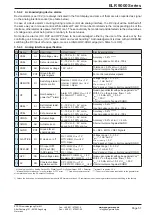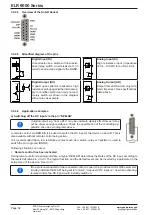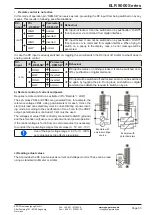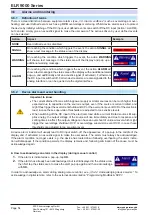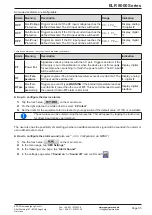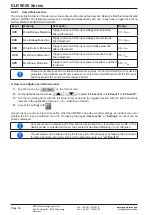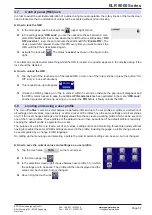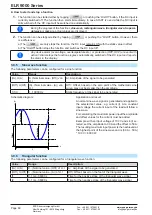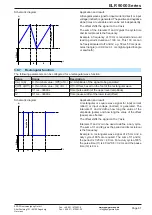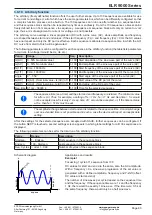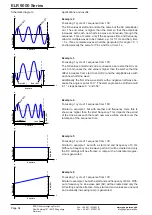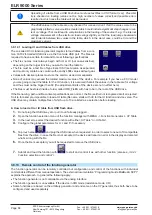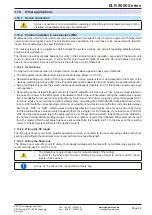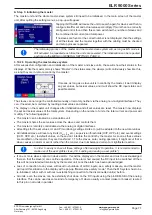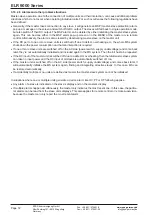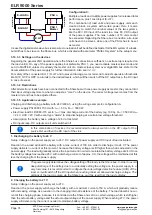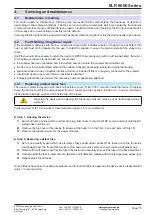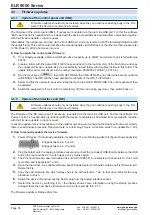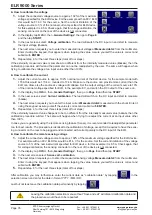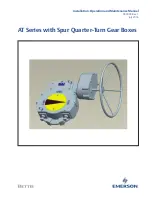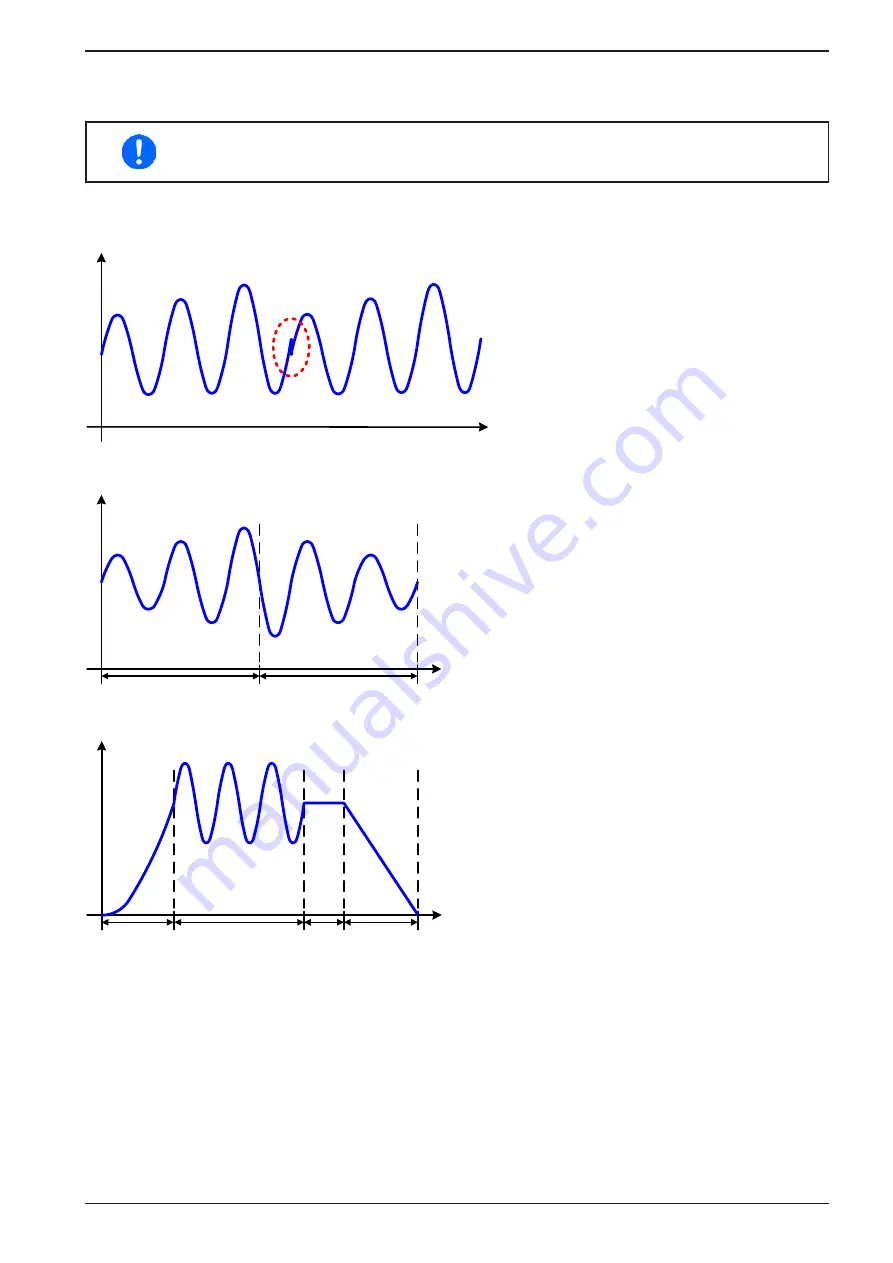
Page 65
EPS Stromversorgung GmbH
Alter Postweg 101 • 86159 Augsburg
Germany
Fon: +49 821 / 570451-0
Fax: +49 821 / 570451-25
ELR 9000 Series
By linking together a number of differently configured sequences, complex progressions can be created. Smart
configuration of the arbitrary generator can be used to match triangular, sine, rectangular or trapezoidal wave func
-
tions and thus, e.g. a sequence of rectangular waves with differing amplitudes or duty cycles could be produced.
Assignment to U or I makes 100 sequences available for the use on either current or voltage,
but not on a mix of both. That means that a sequence 1 which produces a ramp up on current
cannot be followed by sequence 2 which applies a sine wave to the voltage.
Schematic diagrams:
Applications and results:
t
A
Example 7
Focussing 1 cycle of 2 sequences from 100:
A sequence configured as in example 3 is run.
As the settings demand that the end offset (DC)
is higher than the start, the second sequence
run will revert to the same start level as the first,
regardless of the values achieved at the end of
the first run. This can produce a discontinuity
in the total progression (marked in red) which
may only be compensated with careful choice
of settings.
t
A
Sequenz 1
Sequenz 2
Example 8
Focussing 1 cycle of 2 sequences from 100:
Two sequences run consecutively. The first
generates a sine wave with increasing ampli-
tude, the second with a decreasing amplitude.
Together they produce a progression as shown
left. In order to ensure that the maximum
wave in the middle occurs only once, the first
sequence must end with a positive half wave
and the second start with a negative half wave
as shown in the diagram..
t
A
Sequenz 1
Sequenz 2
Seq. 3
Sequenz 4
Example 9
Focussing 1 cycle of 4 sequences from 100:
Sequence 1: 1/4th of sine wave (angle = 270 °)
Sequence 2: 3 Sine waves (relationship fre-
quency to sequence time: 1:3)
Sequence 3: Horizontal ramp (f = 0)
Sequence 4: Falling ramp (f = 0)

